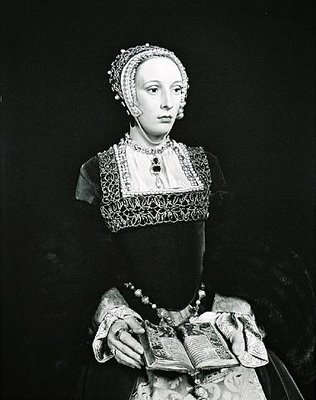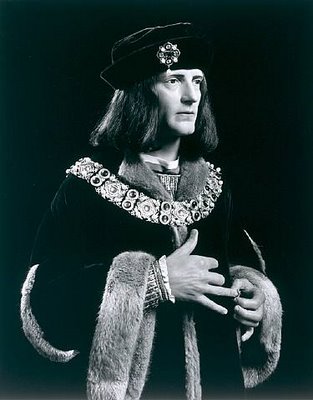On his series, "Seascapes", he writes,
One New York night in 1980, during another of my internal question-and-answer sessions, I asked myself, "Can someone today view a scene just as primitive man might have?" The images that came to mind were of Mount Fuji and the Nachi Waterfall in ages past. A hundred thousand or a million years ago would Mount Fuji have looked so very different than it does today? I pictured two great mountains; one, today's Mount Fuji, and the other, Mount Hakone in the days before its summit collapsed, creating the Ashinoko crater lake. When hiking up from the foothills of Hakone, one would see a second freestanding peak as tall as Mount Fuji. Two rivals in height—what a magnificent sight that must have been! Unfortunately, the topography has changed. Although the land is forever changing its form, the sea, I thought, is immutable. Thus began my travels back through time to the ancient seas of the world.

Caribbean Sea, Jamaica 1980

Lake Superior, Cascade River 1995

Atlantic Ocean, Newfoundland, 1985

Black Sea, Ozuluce, 1991
For his series "Portraits," Sugimoto writes-
In the sixteenth century Hans Holbein the Younger (1497-1543), Flemish court painter to the British Crown, painted several imposing and regal portraits of Henry VIII. Based on these portraits the highly skilled artisans of Madame Tussauds wax museum re-created an absolutely faithful likeness of the king. Using my own studies of the Renaissance lighting by which the artist might have painted, I remade the royal portrait, substituting photography for painting. If this photograph now appears lifelike to you, perhaps you should reconsider what it means to be alive here and now.

Henry VIII 1999

Catherine of Aragon, 1999

Catherine Howard, 1999

7. Richard III, 1999
Questions-
- Even though these two bodies of work are very different, can you articulate any way of describing the similarities that Sugimoto takes to these projects?
- Can you use Sugimoto's work as an example of how Cotton describes (below, first post on chapter 3) the "emotional detachment" of the deadpan aesthetic? Do you think these photographs are emotional?
- How could you compare the "portrait" series by Sugimoto to the work of Thomas Demand, from the previous chapter?

5 comments:
"Are these photographs emotional"?
I think everything we see provokes some kind of emotion - the only difference aside from the kind of emotion is to what intensity we feel it.
Yes, I think Sugimoto's seascape photographs are emotional. For me personally, they're humbling. They can make me feel insignificant. Although it's not a conscious entity... the sea will be here longer than I ever will. The duration of my life is a crumb compared to the loaf that is the sea's (what an awful line).
I don't feel quite so human when I look at these photos (seascapes, again). I'm an animal afterall, who for some odd reason likes to seperate himself from the rest of the animal kingdom by calling myself 'human'. If I were to jump into that sea, and be eaten by sharks, nothing would change. I'd be another animal popped out of existence - that's all. So I guess I also find the subject matter to be intimidating.
(Let it be known that I would never jump into shark infested waters with the intent of being eaten alive)
Are they deadpan?
I'm certainly deadpan when I look at them. But if nature had facial expressions, I think the seas would be its "deadpan". Adjectives like emptiness and abyss come to mind when I think of the word 'deadpan'. These adjectives could be used to describe both a human face and the sea. Obviously not literally, but metaphorically.
I think a similarity these two groups of images share is that they are deatpan and unemotional. When i think of the sea as being emotional, i would think of it raging with giant waves chrashing into the shore or a boat, but these images seem to have alomst no or very little movement. the portraits are the same way. the figures are lifeless and have blank faces because they are made of wax and are lifeless. they have facial expressions but their eyes are blank and emotionless.
Also the two groups are similar in that each group follows a pattern. with the seascapes, the horizion is in the same place in every image and there is an equal amount of sky and water, even in the images that is completely foggy, you can tell that behind the fog, it is the same as the other ones. the same thing with the portraits, all of the figures are in the very center of the frame and they are all facing left they even have the same amout of their body in the frame.
In "Seascapes," Sugimoto has intriguing concepts that are very philosophical. I am more interested in his "internal question-and-answer sessions," than I am in his artwork. I don't think the depth of his thoughts are conveyed as well in his pieces. It would not be as strong as it is without his explanation.
--I find the sea to be mysterious in a way, and although the form may seem to be never change, water by nature is amorphous, so although it seems as though it never changes I am sure it's always changing, but it changes relative to its surrounding changes.
-Shyma El Sayed
Even though these two bodies of work are very different, there are at least some similarities that can be mentioned. To me, both of them take on this very stagnant feeling. I don't believe an astounding amount of 'good' emotion comes from these photographs. When I view them, I don't feel compelled to do anything-or feel compelled to feel a certain way. For the most part when I view them, I have an eery sense come over me. Both of these sets of images make me feel this way. I feel that it is due, in part, to the colors in each. Not only the colors, but the light captured in the photographs as well, particularly in the ones of the portraits. In this sense, the photographer did just as he intended--showed the purely photographic characteristics of the image.
Despite the fact, these pictures are not strike moving. I do not like them whatsoever. I feel like I am looking at an old history book full of pictures. The similarities I think I see that Sugimoto is trying to present is the same color, lighting and contrast.The photographs of the black and white walls and floor is the same coloring as the potraits. The high lighting and low lighting seems to bet he same. The contrast is also the same too.
Post a Comment